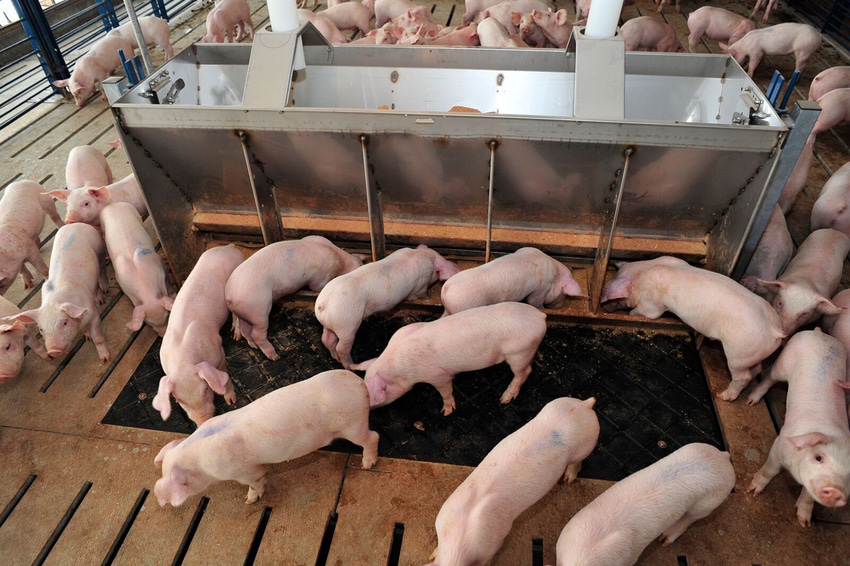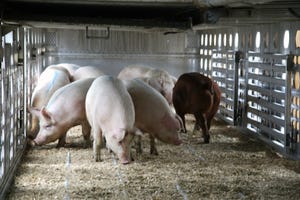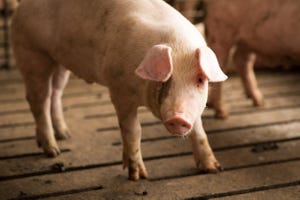What is the value of fats and oils in swine diets?
The 83rd Minnesota Nutrition Conference focused on challenges, opportunities of using fats and oils in modern feeding programs for pigs.
October 13, 2022

Until recently, dietary fats and oils were a staple in swine feeding programs as it was common to use fats and oils to increase energy intake in diets for lactating sows, in summer diets for finishing pigs, in diets for nursery pigs and in diets for gilt development. On a practical aspect, fats and oils aided on dust control rather than actual nutritional value. Due to high market price of all sources of fats and oils, concomitantly with high price of corn and soybean meal, swine nutritionists are questioning the overall value of fats and oils in swine diets. Consequently, the 83rd Minnesota Nutrition Conference, held in Mankato Sept. 21- 22, focused on the challenges and opportunities of using fats and oils in modern feeding programs for pigs.
Trey Kellner, AMVC Nutritional Services, Audubon, Iowa, spoke about the metabolizable or the net energy value of fats and oils in swine diets. The motivation to revise the energy values in diets comes from the fact that the conversion factors to calculations of metabolizable energy (ME; 98%) and net energy (NE; 88%) from digestible energy (DE) and that these conversion factors were developed with a small number of pigs. Therefore, Kellner argues that the current NRC (2012) NE values of fats and oil are inaccurate because the values vary between 4.18 to 8.50 Mcal/kg of fat or oil. A more accurate method may be to estimate the NE value based on prediction equations. A complete review of current prediction equations to estimate the energy value of feed ingredients can be found at Shurson et al., 2021.
Understanding the issues with determination of energy value of fats and oils is important to understand the bases of lipid metabolism. Juan Loor, Department of Animal Science, University of Illinois at Champaign-Urbana, used a ruminant monogastric comparative approach to highlight key aspects of lipid metabolism. When fed corn-soybean meal-based diets, pigs use glucose (primarily from starch) as the main lipogenic source, but when diets containing high fiber feed ingredients, pigs can also use acetate (from gut fermentation) and lactate (from liver metabolism of propionate). During lactation, lipid supplementation is an important management tool because fatty acids are actively taken up by adipose tissue and the mammary gland at a high efficiency rate. As result, sows can maintain body weight and increase milk fat secretion for the benefit of the piglets. Pigs have high capacity for fatty acid oxidation in liver, even at a young age.
The value of fats and oils in swine diets may not be solely of how much energy it gives, but they also supply of essential fatty acids. David Rosero, The Hanor Company, Enid, Oklahoma, reviewed the value of lipids in feeding programs for sows. Rosero's research suggests that the essential fatty acids improve sow reproductive efficiency via rapid return to estrus, high maintenance of pregnancy and increased subsequent litter size. Therefore, a recommendation is to supplement sow diets with at least 125 g/d of linoleic acid and 10 g/d of α-linolenic acid during lactation. Rosero also pointed out that it is important to consider feeding the population (> 90% of the sows) as opposed to feeding "the average sow."
More recent data suggests that value of essential fatty acids should be looked at more closely. Julia Holen, Swine Vet Center, St. Peter, Minnesota, conducted a recent experiment and observed that timing of pre-farrow EFA intake had similar impact on colostrum and milk lipid content, that d 112 of gestation was adequate to change colostrum/milk EFA, and that providing high EFA during lactation improved litter growth and average pig BW at weaning, but it did not influence litter survivability or subsequent reproductive performance of sows. In summary, understanding the energy and essential fatty acid value of fats and oils will be important. All speakers pointed to areas of needed research. For example, the apparent ileal digestibility of linoleic acid in diets with 30% distillers dried grains with solubles is about 66% and inclusion of a postbiotic may increase the apparent ileal digestibility of lipids in DDGS by about 50%. How can you obtain greater value of already supplied nutrients?
References
Davis, J. M., Urriola, P. E., Shurson, G. C., Baidoo, S. K., & Johnston, L. J. (2015). Effects of adding supplemental tallow to diets containing 30% distillers dried grains with solubles on growth performance, carcass characteristics, and pork fat quality in growing–finishing pigs. Journal of Animal Science, 93(1), 266–277. https://doi.org/10.2527/jas.2014-7895
Shurson, G. C., Hung, Y. T., Jang, J. C., & Urriola, P. E. (2021). Measures matter—determining the true nutri-physiological value of feed ingredients for swine. Animals, 11(5), 1–50. https://doi.org/10.3390/ani11051259
Zhu, J., G. C. Shurson, L. Whitacre, I. R. Ipharraguerre, P. E. Urriola. (2020). Effects of Aspergillus oryzae prebiotic on energy and nutrient digestibility of growing pigs, J. of Anim. Sci. 98, Issue Supplement_3, November 2020, Page 80
Source: Pedro Urriola, who is solely responsible for the information provided, and wholly owns the information. Informa Business Media and all its subsidiaries are not responsible for any of the content contained in this information asset.
You May Also Like



